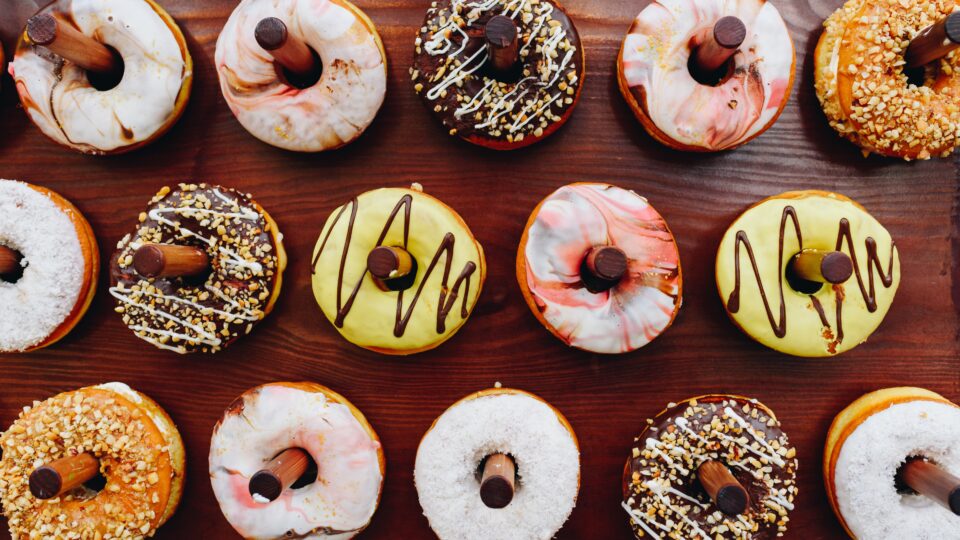Riding The Craving Wave
More than 90% of individuals experience cravings on a typical day, whether that is for food, beverages, alcohol, or other substances like nicotine or caffeine. While we all experience cravings in a slightly different way, the most common food cravings are for foods that are high in sugar, salt, or unhealthy fats.
From a sensory standpoint, your cravings surface for various reasons. The sight of fancy chocolate on your co-worker’s desk, the smell of Mrs. Fields cookies at the mall, or even hearing your favorite Food Network chef describe a new version of a traditional recipe can all cause your cravings to surge.
From an emotional standpoint, cravings can appear for many reasons, too. From the joy of getting a job promotion, the sadness of losing a loved one, the anxiety that comes along with an important presentation, or the fear of driving home in the midst of a snowstorm and almost plowing into another car, cravings ebb and flow.
No matter the source of your cravings, you have the power within you to honor your craving or to distract yourself and let the craving pass. If you are truly present when making one of these two decisions, you’ll probably recognize that cravings are very much like ocean waves. Cravings generally rise in response to a trigger, form a crest when they reach a peak, and then eventually fall again like that of a trough.
Enter the concept of “surfing the urge”
Urge surfing was first developed and prescribed by Alan Marlatte, Ph.D, a leading psychologist in the field of addiction. Urge surfing can actually be used to avoid acting on any behavior that you want to stop, including shopping online, impulsively texting an ex, engaging in toxic conversations, or stopping at Starbucks every time you are out doing errands.
Surfing the urge allows you to ride the wave, without feeling powerless and instead, knowing eventually you’ll “hit the shore” with patience and willingness to be slightly uncomfortable. Like most things, however, what you repeat gets strong and whatever you avoid eventually becomes weaker and fades away. Practicing this technique consistently will allow you to build strength in managing your cravings, too.
“You can’t stop the waves, but you can learn to surf.”
~ Jon Kabat-Zinn
Just like actually learning to surf, this mindfulness practice will take some practice, but consistent effort will pay off. Over time, you’ll become more resilient to cravings, but it is also normal and expected that you’ll fall off the metaphorical board sometimes. Mindfulness is of utmost importance here because it allows you to embrace and accept cravings, empowering you to build a tolerance to cravings.
Let’s do a quick review of one way to surf the urge, through breathing and mindfulness, with a series of steps:
- Take a moment to connect to your breath. Don’t try to slow down or speed up your breath, just let it be.
- Notice your thoughts and observe them without judgment. No need to follow thoughts or feed thoughts, but instead just bring your attention to what is running or racing through your mind.
- Do a quick body scan and try to focus on the area of your body that seems to be holding a physical sensation to act on the urge or satisfy the craving. You may feel a heaviness in your chest, tension throughout your neck or shoulders, or clenched fists. Notice the intensity of the sensation.
- Once you are focused on the location of the sensation, observe it with curiosity. If fear arises, try to replace fear with interest in understanding the experience.
- Take a moment to connect back to the breath. You can imagine that the inhale is an opportunity to breathe in anything you feel you need to help you relax into the craving (like energy, peace, or calm) and with each exhale imagine letting go of anything that isn’t serving you (like fear, anxiety, or tension).
- Continue to breathe through the craving until you feel like it is subsiding. Repeat the above steps as many times as you need and understand that cravings or urges may not subside until 5 – 30 minutes have passed.
Now that you have an idea of how you can practice surfing the urge, I want to point out a couple of things. First, this may take practice and that is to be expected. Each time you use the urge surfing technique, it may feel a bit different or you may tune into different sensations. Second, this won’t ever feel like a perfect practice, and you may need to come up with your own list of action steps to make urge surfing work for you. You may find that this technique works best when you come up with your own specific list of steps. Find what works for you and develop your very own urge surfing technique.
Once you test out this technique for managing your cravings, let us know how it worked for you. We’d love to know if you’ve developed a system of your own based on our guidance, or if you’ve noticed changes in your SHMEC or shape as a result of this practice. Remember, just ride the wave next time your craving hits, and eventually you’ll hit the shore again!
Photo by Anastasiia Chepinska on Unsplash

